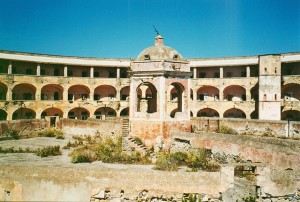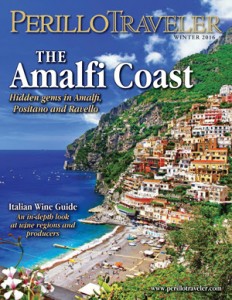 The Italian government recently announced it will allocate 1 billion euros to 33 sites around the country, with the largest sum of 70 million euros going toward restoration of a stone jail built in 1795 on the island of Santo Stefano in the Tyrrhenian Sea (pictured). Mussolini’s fascist regime sent political prisoners to the jail before it closed in 1965, and it has since fallen into disrepair.
The Italian government recently announced it will allocate 1 billion euros to 33 sites around the country, with the largest sum of 70 million euros going toward restoration of a stone jail built in 1795 on the island of Santo Stefano in the Tyrrhenian Sea (pictured). Mussolini’s fascist regime sent political prisoners to the jail before it closed in 1965, and it has since fallen into disrepair.
The Uffizi Gallery and Pompeii will each receive 40 million euros. Projects at the Florence museum that will benefit from the grant include expanding the museum and opening the Vasari Corridor to the public, as the museum’s director Eike Schmidt announced in March. The money at Pompeii will be used to maintain the ancient ruins, which have been suffering from neglect for years. In nearby Herculaneum, an ancient Roman city that was destroyed along with Pompeii in 79 AD, 10 million will help with preservation, maintenance, and excavation, as 75 percent of the UNESCO World Heritage site has never been excavated.
Another 40 million euros will pay for repairs at the lavish Palace of Caserta in Campania, which was built by Bourbon kings as an Italian version of Versailles. Thirty million euros will go to the city of L’Aquila in Abruzzo, whose city center was heavily damaged in a 2009 earthquake that killed 309 people and destroyed historic buildings.
The investment will also allow for the mapping and clearing of the Via Francigena, an ancient pilgrimage route that stretches from Paris to the Swiss Alps to Rome. Other sites that will benefit from the money include Bolognese churches, palaces in Genoa and Mantua, a former convent on the island of San Nicola off the coast of Puglia, and the Pinacoteca di Brera art gallery in Milan.
Italian Culture Minister Dario Franceschini said the investment is “the biggest operation on our cultural heritage in the history of the republic [since it was established in 1946].” This funding is in addition to 300 euros million allocated in January to 241 Italian historical sites including the Domus Aurea in Rome.
“These projects will start straightaway. These are not just announcements, but initiatives that have already been deliberated and financed,” he said.
He also noted public funding for his department increased by 27% from 2015 to 2016 and said the money is “proof that this government believes in culture driving growth.”
By Kathy McCabe
Want to read more about travel? Get your free copy of our new digital magazine, Perillo Traveler!

